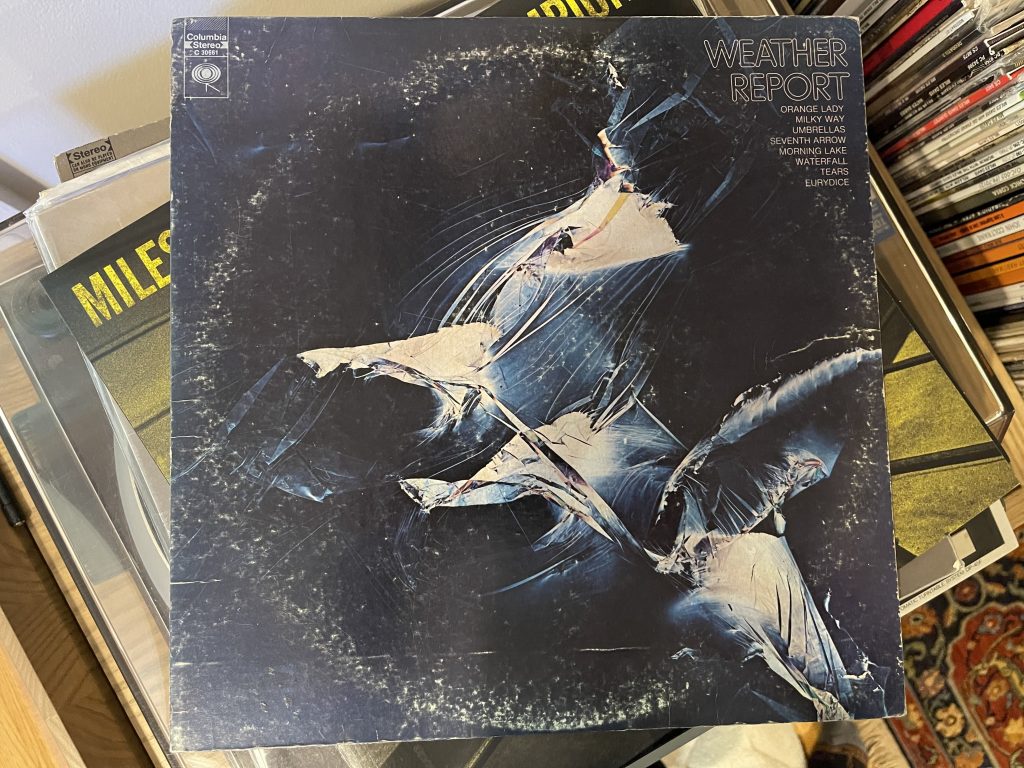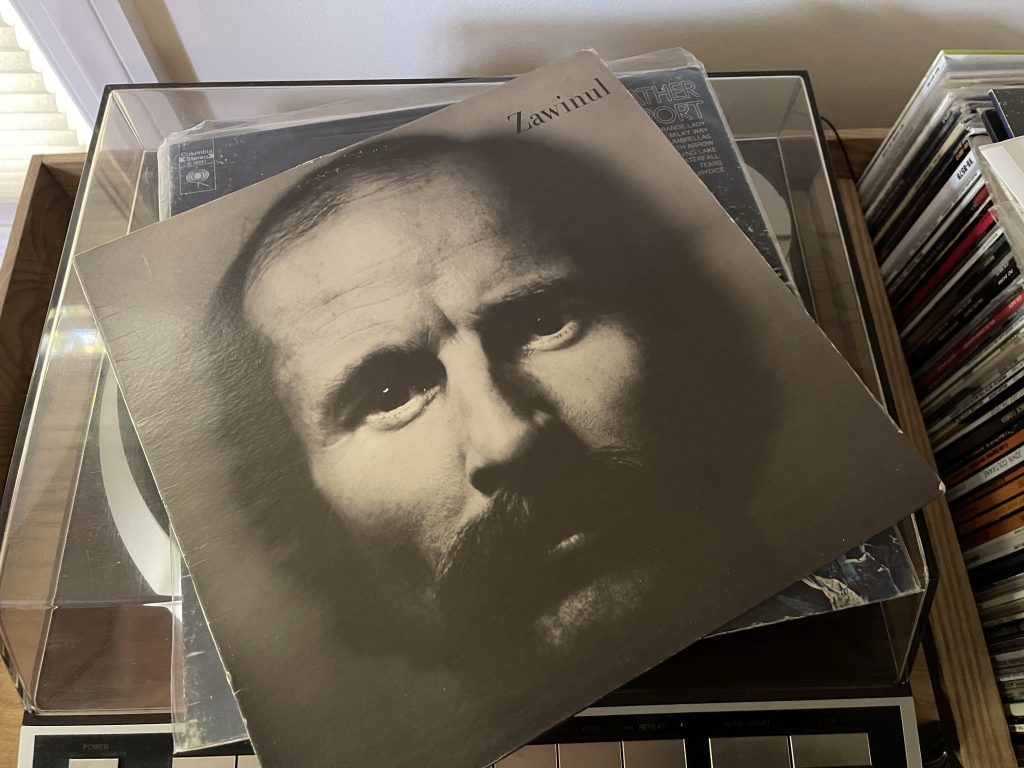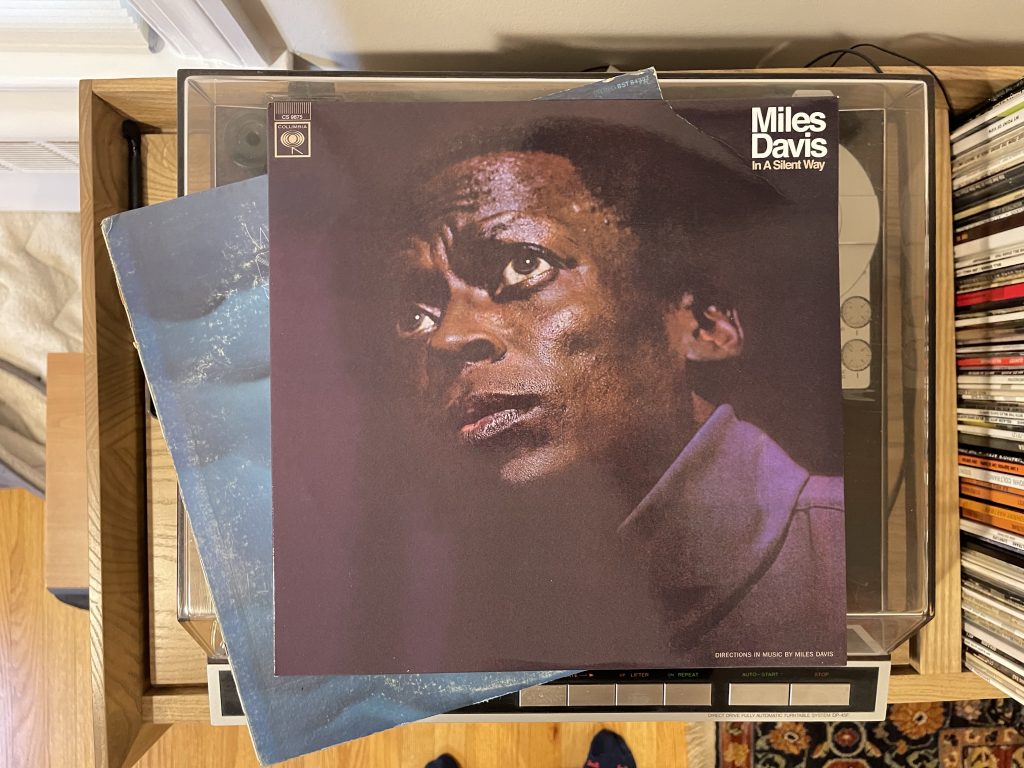
Album of the Week, September 24, 2022.
It’s not clear how it was that Wayne Shorter, Joe Zawinul, and Miroslav Vitouš got together to form the jazz-fusion supergroup Weather Report. One story has it that Shorter and Zawinul, who we last saw together recording on Miles’ In a Silent Way, started working together and then recruited Vitouš. Another story has it that it was Shorter and Vitouš, fresh off their collaboration on Super Nova, recruited Zawinul (who had collaborated with the Czech bassist on his eponymous album Zawinul). Regardless of who recruited whom, the three together then were joined by drummer Alphonse Mouzon, who had been working with pianist and Coltrane collaborator McCoy Tyner, and the percussionists Don Alias and Barbara Burton. As the recording progressed, Alias found Zawinul’s directive tendencies constraining and left, to be replaced by Davis collaborator Airto Moreira, otherwise mononymically known as Airto. So it goes.
But what was the music like?
I will be honest: growing up, I thought I knew what the music was like, and I avoided it for as long as possible. My earliest exposure to live jazz came from the inclusion of a jazz-fusion band, which if memory serves was called TRADOC Rock, at the US Army Fourth of July concerts at historic Fort Monroe in Hampton, Virginia, where my family would inevitably go to celebrate the holiday. I remember as a kid liking the rhythmic, guitar-heavy music, but as I grew older I found it increasingly cheesy. I thought that was what fusion was. And I knew that Omar Hakim, from Sting’s first band, had played in Weather Report, so I assumed that the band had that same kind of rock inflected jazz.
Then of course I heard Miles. First In a Silent Way, which I loved, and then Bitches Brew, which I was more ambivalent about; then tracks from Live-Evil on the Columbia compilation that covered Miles’s whole career with that label (highly recommended, if you can get your hands on it), which I found utterly fascinating for its combination of rock, funk, and electronic augmentation. When I reflected that Weather Report contained the mastermind behind In a Silent Way and the equally mesmerizing Wayne Shorter, I decided to check out their first album. It was completely different from my expectations in every way.
The first track, “Milky Way,” sounds like a transmission from Voyager. The sound is otherworldly, with distant echoes of harp and wind; I’ve read that they made the sound by closely miking piano strings, then having Zawinul hold down chords while Shorter blew his soprano sax directly at the soundboard, invoking sympathetic resonance. Whatever they did, it’s an utterly unique sound and completely hypnotic. In another world, they would have recorded whole albums with this technique; here, after just over two and a half minutes of transmissions from the Solar System, they’re on to…
“Umbrellas,” which more nearly fits the fusion stereotype, and features a severely fuzzed out electric bass, which (it’s hard to tell) may or may not be doubled by distorted synth lines from Zawinul, over a driving rock backbeat from Mouton and Airto. Shorter’s soprano sax plays the melody over a series of chords from Zawinul, then the beat abruptly shifts into a slightly faster, fatter funk groove, with Shorter and Vitouš trading phrases over Zawinul’s chords. Shorter’s solo comes in as if transmitting from another world, the soprano sax descending in a different mode, and passes into silence before the group drops back into the opening beat and theme. The sound world passes quickly, in only three minutes—a theme on the album, which seems determined to fit in as much experimentation as possible.
“Seventh Arrow” opens with a brisk burst of sound led by Shorter over a Zawinul electric piano line that you’d be forgiven for mistaking for Herbie Hancock. It’s the tune most like Miles’ work on the album, sounding a little like a group improvisation from the Bitches Brew sessions; that it was composed by Vitouš, who never collaborated with Miles, seems beside the point. Unlike the first two tracks this is a group workout, with each of the three lead players throwing licks back and forth over a ferocious bed of percussion.
The shift into the reverie of “Orange Lady” is a complete contrast. Zawinul’s echoing Fender Rhodes line, possibly supplemented with additional effects, leads into a plaintive solo line played on unison soprano sax and Rhodes. This might be the track closest in its genetic makeup both to In a Silent Way and the experiments on Zawinul’s self-titled album; unsurprisingly it is the first track on the album solely credited to him. After the contemplative opening, the gears shift and Vitouš lays down a bass line that climbs in open fifths back and forth, while Shorter plays a modal line that descends from the fifth of the scale down to the second and back, before the group comes back together to the opening reverie. It’s a stunning work closing out side 1.
“Morning Lake”, the second of the two Vitouš compositions on the album, sounds a lot like Zawinul with a funk twist and is a spiritual cousin to the more contemplative numbers on Infinite Search. With Airto (and possibly Alias and Burton) conjuring bird sounds and the bass line rippling out like circles in the water, the effect is a tone poem that sounds like a continuation of “Orange Lady.” Indeed, if there’s a criticism to be levied at the album, it’s the similarity of the tunes at its center, but the trance they induce is rewarding in its own way.
“Waterfall,” Zawinul’s turn at evoking this evolving musical concept, centers on a rhythmic repetition of the third of the scale in the piano while the other players explore around it. In some ways the composition anticipates minimalism and the works of John Adams, or even some of the later, more lyrical works of Philip Glass, as the bass and soprano sax alternate in an octaves-apart duet. It’s a more delicate and in some ways optimistic exploration, with Zawinul’s keyboard line evoking, in turns, a stream, an oboe, and a music box.
“Tears,” the first of two Wayne Shorter compositions on the album, eschews some of the avant-garde explorations from Super Nova in favor of pure melody — first lyrical in the saxophone, then a swerve into funk, then wordless song, courtesy of Alphonse Mouton. The overall effect is stunning and anticipates Shorter’s later 1970s work with Milton Nascimento. The track transitions seamlessly into “Eurydice,” which dives into the world of Super Nova with a group improvisation on a chromatic theme. The album ends with the group still searching.
With Weather Report, Zawinul, Shorter and Vitouš invented a new tonal language and created a new jazz brand. The original band would not stay together—Vitouš left during the recording of the third album and a rotating cast of percussionists played with the band during this career. But the group would stay together for nearly 15 years, promoting a brand of jazz fusion that was heavily influenced by R&B and world music. The tonal language that they invented—synths and keyboards, innovative percussion, serene soprano sax—stood well apart from many of the other practitioners of jazz fusion, not coincidentally including Miles Davis, who continued to explore his own fierce brand of musical innovation. We’ll hear from him next time as we close out this long series on Miles and his legacy.
You can listen to the album here:


